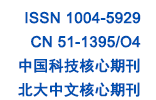



Effects of Different Particle Size on the Charge Transfer between CdS QDs and Cobaloxime Studied by Photoluminescence Spectroscopy
Effects of Different Particle Size on the Charge Transfer between CdS QDs and Cobaloxime Studied by Photoluminescence Spectroscopy
| {{custom_ref.label}} |
{{custom_citation.content}}
{{custom_citation.annotation}}
|
/
| 〈 |
|
〉 |